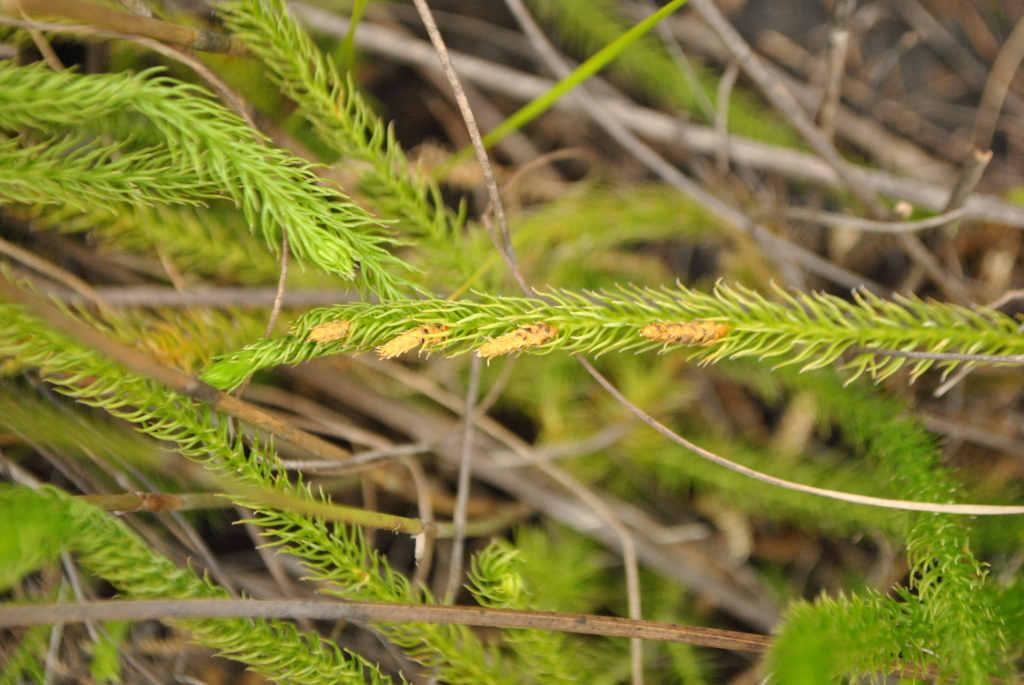Lycopodiella lateralis
(R.Br.) B.Ollg. Slender Club-mossRhizome creeping, much-branched. Aerial stems erect or straggling, undivided or branched several times near base, 10–40 (rarely less than 10) cm long. Leaves spirally arranged, close-set and overlapping, ascending or spreading, linear-lanceolate to lanceolate, usually hair-like, but can be flattened, 4–7 mm long, less than 1 mm wide, light green to olive-green; bases short-decurrent; margins slightly recurved. Strobili few, lateral and acutely angled to stem, almost sessile, 10–15 mm long. Sporophylls closely overlapping, spreading when ripe, broadly ovate, pale-brown; margins irregularly serrate or jagged; apex abruptly acuminate.
GleP, VVP, GipP, OtP, WaP, CVU, GGr, DunT, EGL, EGU, WPro, HSF, OtR, Strz, VAlp. Also Qld, NSW, Tas. (including Cape Barren Is. and King Is.). New Zealand, New Caledonia.
Lycopodiella lateralis usually has characteristic hair-like, spreading leaves and lateral strobili, although some plants from the Grampians, Otway Range and Wilsons Promontory have broader, more ascending leaves on all or part of plant (as do some Tasmanian specimens). An Otway variant grows only 5-10 cm tall and is somewhat intermediate between Lycopodiella lateralis and Lycopodiella serpentina
Entwisle, T.J. (1994). Ferns and allied plants (Psilophyta, Lycopodiophyta, Polypodiophyta). In: Walsh, N.G.; Entwisle, T.J., Flora of Victoria Vol. 2, Ferns and Allied Plants, Conifers and Monocotyledons, pp. 13–111. Inkata Press, Melbourne.
 Spinning
Spinning



